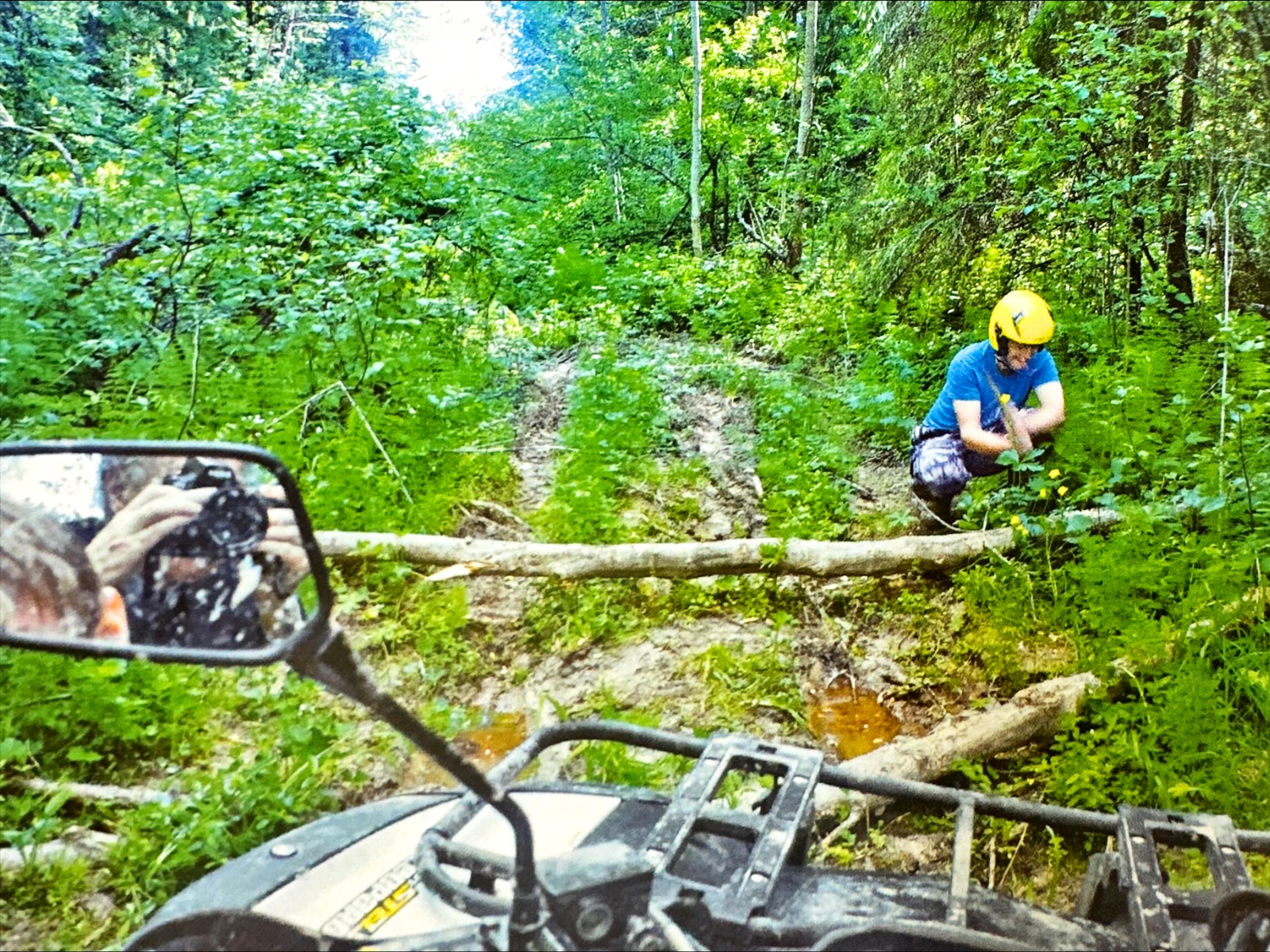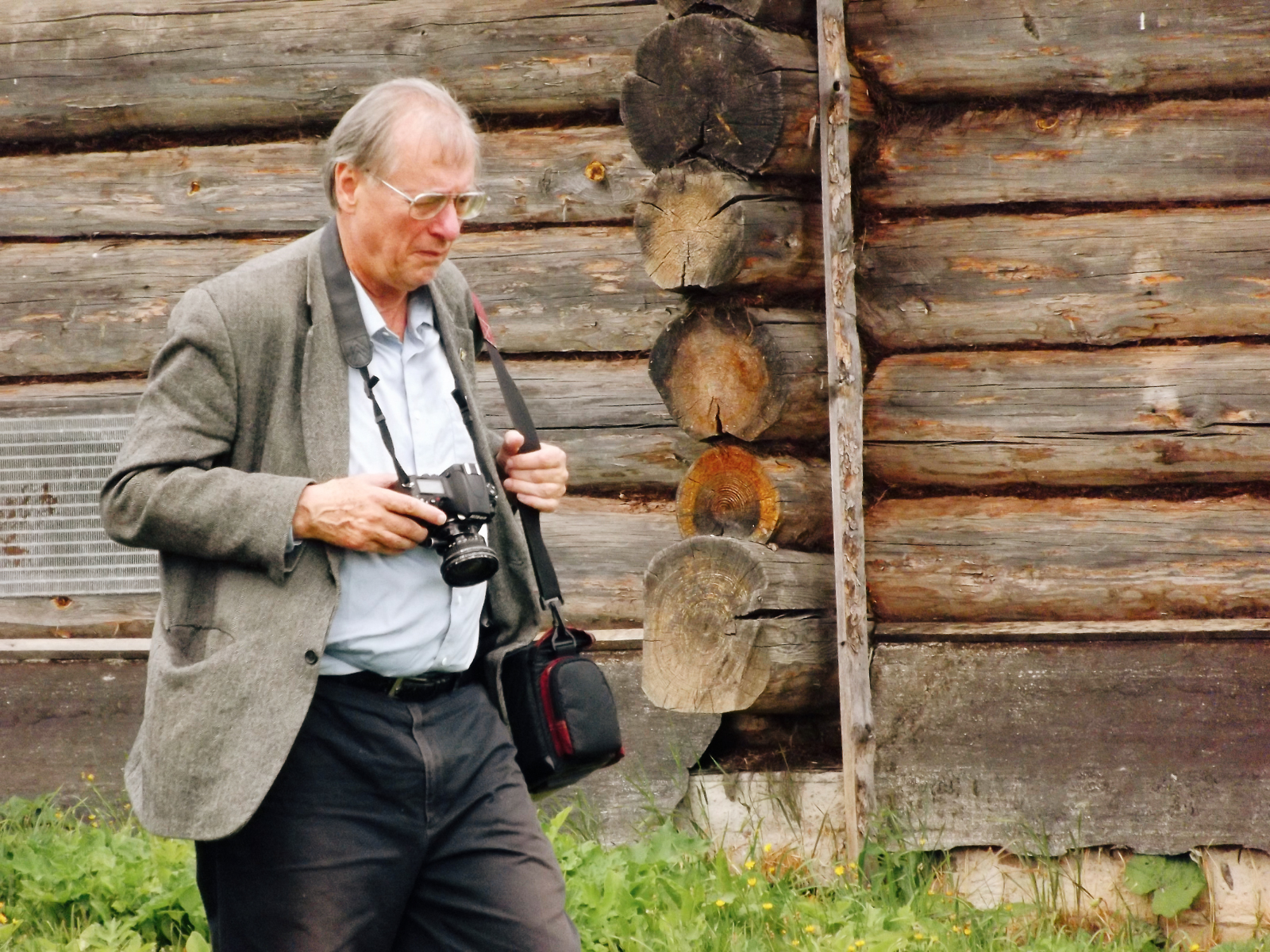Russia’s Wooden Architectural Heritage: A New Book by Tulane's William Brumfield
Photography plays a crucial role in preserving architectural memory, especially for wooden structures in remote Russian regions. In his latest book, From Forest to Steppe: The Russian Art of Building in Wood, Tulane University professor William Brumfield builds a powerful historical archive that documents wooden churches, homes, and barns that are rapidly disappearing.
Spanning over a half century from 1970 to the 2020s, Brumfield's photographs document the architectural legacy of rural Russia, from the cities of European Russia to the vast expanses of Siberia and the Far East. The over 400 color images in his latest book serve not only as striking visual records but as scholarly documents that reveal vernacular building techniques and the changing cultural landscape of Russia's countryside. Each image is meticulously dated and often captures structures in various states of abandonment, decay, and restoration, offering a rare glimpse of a unique vernacular architecture.
In From Forest to Steppe, Brumfield turns his lens on the wooden architecture, which is now increasingly threatened by urban redevelopment, economic shifts, water intrusion, deferred maintenance, fire, and even entangled in title disputes. As he notes, wooden buildings are frequently cleared in favor of denser development and are often seen as inconvenient or outdated. Yet these structures can carry centuries of history, culture, and craftsmanship. Without Brumfield's documentation, many of them would vanish without a trace.
The book also foregrounds the personal dimension of Brumfield's decades-long work. In his beautiful and moving exordium, he reflects on the personal relationships he developed over the years of fieldwork, as well as the trust he built with local communities, who have come to his aid and, in some cases, even challenged him. These connections often provided access to remote buildings and oral histories, enriching the project with human context beyond the built environment.

Photography is more than a tool for Brumfield; it's the core of his scholarly practice. "If I can photograph something, it's worth studying," he says. His approach hasn't always fit neatly into traditional academic categories, occasionally creating friction in scholarly circles. Still, supporters like James H. Billington, the 13th Librarian of Congress, recognized the power of his work. "Photography drives that impulse in my work," Brumfield says. "I wouldn't do it otherwise."
Brumfield has produced tens of thousands of images and authored more than 45 books, all driven by his conviction that photography is an important medium for discussing and examining architecture.
He credits Tulane and New Orleans more broadly with sparking his appreciation for architecture's cultural power. In the mid-1960s, as a Tulane student, Brumfield began to understand architecture as a "formative milieu," a complex, creative force that shapes identity. Observing the interplay of wooden frame houses and masonry structures in New Orleans gave him a broader awareness of how architecture reflects cultural life. That understanding became foundational as he turned his attention to Russia.
Brumfield's academic background in Russian language and culture, combined with the realization that much of Russia's architectural heritage hadn’t been documented and his confidence as a photographer, drove him to act. His visual archive now stands as one of the most comprehensive records of rural Russian architecture in existence.
To learn more about Brumfield's work, you can explore From Forest to Steppe, available now through Duke University Press.
You can also view his photographs in person at the exhibition "Avant-garde Architecture of the Soviet Era: Photography by William Brumfield," on view at The Museum of Russian Art in Minneapolis from June 14 to October 12, 2025.
— Rebecca O'Malley Gipson (July 21, 2025)
Want a deeper look into the new book? Below is a brief excerpt from our interview, discussing some of the specific themes and insights from Brumfield's most recent publication.
Gipson: The book moves geographically from the forested zones to the southern steppes. How did this journey shape your visual narrative for this book?
Brumfield: The organization of the book is something I imposed on the material after the fact. In other words, I already had this fieldwork—an enormous body of photographs—and only later did I begin to shape it into a book. I didn’t set out with the idea of writing a book and then go take the photographs; the photographs were already there. So the process became one of managing the material.
In terms of the fieldwork itself, it began back in the 1970s and 1980s in the major cities of European Russia. Then, in the 1990s, it expanded into the Russian North. With support from the Library of Congress in 1999 and the early 2000s, I was able to travel farther—to the Urals, Siberia, the Russian Far East, and even the far northeast.
So yes, there’s a chronological dimension to the work, but essentially, it was built over dozens and dozens of trips, particularly in European Russia. The challenge later was to organize that material in a way that gave the project a coherent structure.
Gipson: In your documentation, you often photograph buildings in a state of decay or abandonment. How do you balance the aesthetic choices with the ethical responsibilities of documentation, especially when your images may be the only visual record of these buildings?
Brumfield: You have to work with what's there in whatever condition, and date the photograph so that the specific time is clear. In some cases, you go back to places and find them in worse or better shape. And sometimes the restored form is not entirely accurate. There are nuances here that must be sorted out by a scholarly, critical approach, so that you carefully record what's there. In some cases, the abandoned form can be more evocative and poetic, as I noted in my book Lost Russia (1996).
Gipson: You emphasize the continuity between vernacular building traditions and sacred architecture in Russia. How do you see this continuity reflecting in broader, broader themes of Russian identity, especially in these rural communities?
Brumfield: The church was the center of a rural community. Particularly in the Russian North, but elsewhere in Russia as well, many of those churches built of wood because it's a forested country. In the central part of Russia, wooden churches were frequently destroyed by fire and often replaced by brick churches, as the landowner chose. Losses among historic wooden churches, whether by fire or neglect, have been severe. A number of prominent examples that I photographed no longer exist, as I note in the captions.
In the north, where there was very little serfdom, the villages always would have a church. It was usually an imposing presence. They're remarkable structures, as you can see from many of my photographs. Many of the same building techniques are used in vernacular architecture. Both secular and sacred structures require a mastery of building in wood, and you have to know what you're doing. They did, with extraordinary results.
